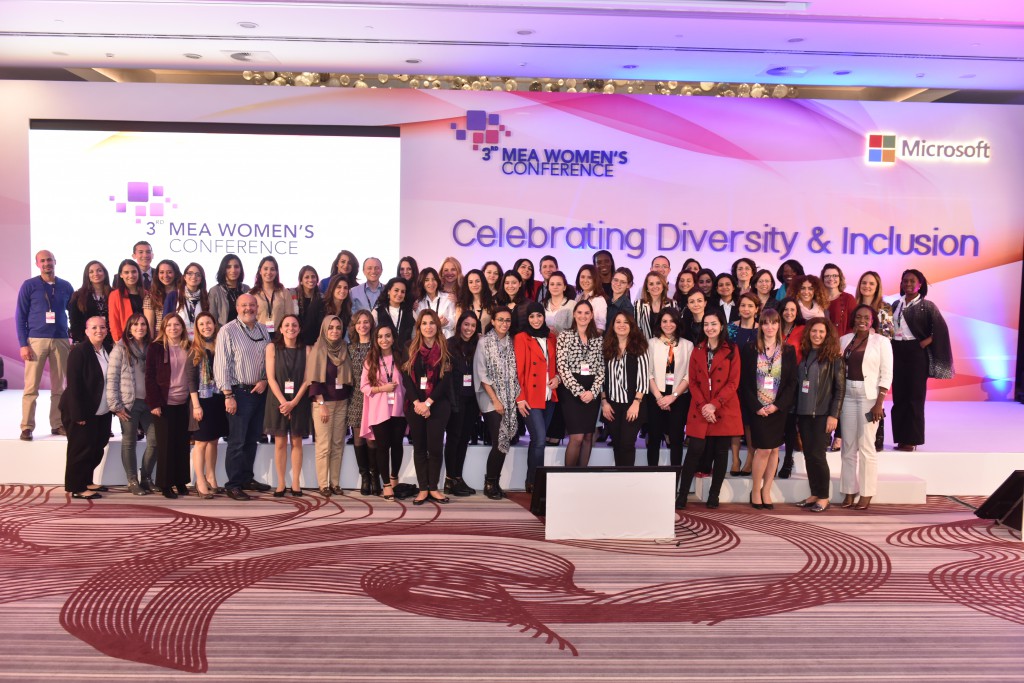Note
Access to this page requires authorization. You can try signing in or changing directories.
Access to this page requires authorization. You can try changing directories.
By: Nidhi Singh - Diversity and Inclusion Manager IMEA
I recently attended the 3rd annual Middle East & Africa (MEA) Women’s Conference in Istanbul, Turkey hosted by Microsoft. This year’s theme was all about celebrating diversity and inclusion in the MEA region.
As the diversity and inclusion manager for Microsoft India, Middle East and Africa, it was inspiring to see how Microsoft is broadening the focus on diversity and inclusion.
As a company dedicated to finding ways to help people and organisations do and achieve more, building a diversity agenda that encompasses a wide spectrum of people with different backgrounds, abilities, personalities, working styles, cultures and languages is so important. After all, how can we develop products and solutions for our customers unless we understand them? This also means that we need a diverse and culturally competent workforce, one that reflects the ever-changing demographics of our customers.
While this is a long journey, Microsoft Middle East and Africa is making good progress in creating a truly diverse and inclusive workforce. From HR practitioners to business leaders, the region is really committed to driving awareness and understanding of the importance of diversity and inclusion, embedding the idea in everyday conversations and making it meaningful for everyone.
Is gender still an issue?
As much as we’d like to believe that it is not, industry data highlights the continued need for strategy-based outcomes to grow gender representation in the workforce.
If you look at women’s representation in private and public sector institutions, and even in universities, you’ll see that women are still underrepresented. In many cases, companies try and maintain a 50/50 ratio in their recruitment pipeline but that pipeline is continuously ‘leaking’ due to many different factors. However, despite the ongoing issues of gender inequality, it’s still important to remember that a diverse workplace should not only be measured against a gender ratio but also other lenses.
Similarities between MEA and India
The MEA and India regions as a whole have striking similarities because both have highly diverse cultures, which present equal opportunities and challenges in terms of inclusion in the workplace.
MEA is such an enormously diverse region with many people from various different cultures and nationalities due to the region’s proximity to Asia, Africa and even Europe. Similarly, India also has a wide range of people with different religions, cultures and languages. In many ways, this can also be extended to the fact that inclusion is not a new concept in these cultures despite the nuances that exist.
Unconscious bias and its impact in the workplace
A topic I am particularly interested in is ‘unconscious bias’ and how this informs the way we conduct ourselves in the workplace.
During my keynote address at the conference, I spoke about the fact that we all have biases that we unconsciously act out in the workplace. This extends beyond the ‘conscious’ biases we tend to associate with the way someone looks or talks. For example, there is the ‘consensus bias’ where we tend to associate only with people who agree with us, resulting in ‘in-groups’ and ‘out-groups’ in the workplace where people are granted unearned advantages by virtue of their belonging to the ‘in-group’.
In order to create a fully diverse and inclusive workforce we need to become aware of these biases and constantly take action against them. This is truly the first step in this journey. Collective change is always driven by change undertaken at a personal level and thus it is each individual’s responsibility to drive this change within themselves.
How can we contribute to a diverse and inclusive workforce at an individual level?
The most important thing we can do as individuals to work on our unconscious bias, is to become aware of our biases and understand how our biased behaviour affects others. The next step is to take action to correct the decisions or actions that may occur as a result of these biases.
It is also our responsibility to call out these biases when we see them in action at the workplace. It is only when we take action together, that we create change within the workplace as well as society on the whole. In many ways, this can be our legacy for the generations to come.
